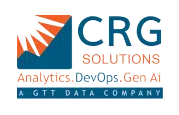📝 Written by : Girish Batra (Visual Design Consultant)
In our data-driven world, the impact of well-analyzed information is immense. However, many organizations struggle to unlock the full value of their data due to its complexity. This is where synergy between the designers who create user experiences and the data analytics teams that interpret raw data becomes vital. Through effective collaboration, organizations can turn intricate datasets into clear, visually appealing insights that enhance user experiences and drive informed decision-making.
The Importance of Interdisciplinary Collaboration
Collaboration between designers and data analytics teams is crucial for several reasons. Designers excel in crafting intuitive user experiences, while data analysts excel in extracting insights from complex data. When these two groups work together, the outcome is a powerful combination of visual storytelling and data-driven insights.
This interdisciplinary collaboration fosters innovative solutions tailored to meet user needs. By integrating creative design with analytical prowess, organizations can create products that stand out in the marketplace. For example, implementing this kind of teamwork has been shown to improve user engagement by up to 40%, significantly enhancing customer satisfaction.
Understanding the Role of Designers and Data Analysts
Designers focus on creating engaging and functional user interfaces using tools like Adobe XD and Figma. Ideally, designers should also possess a basic understanding of data visualization tools such as Tableau or Power BI. This broader skillset allows for more effective collaboration and smoother project execution, particularly on larger projects where the designer can directly contribute to the visualization process. Their goal remains to empathize with users, understand their challenges, and design intuitive solutions, including interactive prototypes.
On the other hand, data analysts are skilled in interpreting vast amounts of data using tools like SQL or Tableau. They mine the data for insights and trends. While data analysts are proficient in visualization, in smaller projects, a data analyst might handle the entire visualization process, while larger projects benefit significantly from the collaboration with a designer who understands visualization basics. Visuals are processed 60,000 times faster than text, underscoring the importance of effective design in presenting data. A designer’s understanding of visualization tools complements the analyst’s expertise, leading to more impactful and user-friendly data presentations.
Bridging the Gap: The Design of Data Visualization
Data visualization is a crucial area for collaboration. Effective visualizations make complex data easily interpretable, revealing patterns and insights at a glance. Designers use principles such as color theory, typography, and layout to transform standard charts into compelling stories. A designer’s familiarity with visualization tools empowers them to participate actively in the visualization process, ensuring that the final product is both aesthetically pleasing and effectively communicates the data. For example, a well-designed dashboard might use contrasting colors to highlight critical metrics such as conversion rates, allowing stakeholders to quickly grasp performance levels.
Making Data Actionable
Designers play a crucial role in making data understandable and relatable. They create dashboards that highlight key performance indicators (KPIs) and interactive visualizations that empower users to make informed decisions. This process is significantly enhanced when the designer possesses a basic understanding of visualization tools; they can not only focus on the visual appeal but also contribute to the technical aspects of the visualization. For instance, a financial services company might design a user-friendly interface that allows clients to view real-time data about their investments. By working closely with data analysts, they ensure that the critical information is displayed in a way that resonates with users.
User Experience: The Central Focus
Enhancing user experience (UX) is a primary goal for both designers and data analytics teams. When users encounter clear, intuitive visualizations, their understanding of complex data improves, leading to higher satisfaction rates.
Incorporating user feedback into the design process is essential. For example, designers can conduct usability testing with real users to identify areas for improvement. By involving data analysts in this research, both teams can better understand user behavior, leading to more functional and appealing designs.
Implementing Feedback Loops
To foster continuous improvement, it is important to establish feedback loops between teams. By holding regular brainstorming sessions, designers and data analysts can discuss successes and challenges. These sessions can be structured using collaborative platforms, enabling both teams to stay aligned on goals.
User engagement metrics can further enhance these discussions. For example, designers can analyze click-through rates on different visualizations to see what captures user attention, while analysts can update their models based on this real-world behavior. This cooperative process maximizes the effectiveness of both design and analytics.
Case Studies and Examples
Several organizations exemplify the positive outcomes of this collaborative approach. An online retailer, for instance, merged their design and data analytics teams to refine their website interface. By analyzing customer behavior data, they tailored the shopping experience to align with user preferences, resulting in a 25% increase in conversion rates.
In healthcare, a collaboration between designers and data analysts led to the creation of streamlined dashboards for monitoring patient data. This innovation not only improved the speed of healthcare professionals’ decision-making but also resulted in a 60% decrease in reporting errors, enhancing overall patient care.



